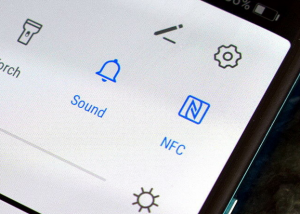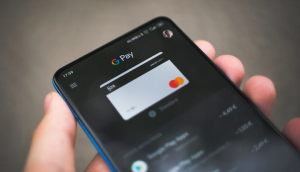Near field communication
What is near field communication?
NFC is an abbreviation for Near-Field Communication. As the name suggests, NFC is a communication protocol for devices that are capable of wireless communication. NFC is a step ahead of technology in comparison with RFID (Radio Frequency Identification).
With the revolution in payment methods that include online payments and credit card payments, RFID was evolved into NFC technology. NFC enables wireless connectivity not only for credit cards but this technology is now being used in smartphones. Samsung smartphones include Samsung Pay (S-Pay), which allows a user to make online payments using NFC technology.
NFC has become common means in mobile payments also it is used in scanning RF ID for contacts exchange. millions of people use today to make mobile payments. as it enables simple and safe two way interaction to make payments. Some robots and other industries use NFC as well to scan RFID in case of robots they are use to determine their current location and then calculate or maneuver their direction based on the current location or position. Although NFC is widely used in mobile phones. there are 3 types of communication using NFC read/write mode: In this mode the NFC device is capable of reading a NFC tag or writing data on to a tag. peer to peer is a communication data exchange between 2 nfc devices. Card emulation mode in this mode the nfc devices appears like an external card reader.

These are wireless communication protocols, with RFID being one way and NFC a two-way communication module. This means that by using RFID, we can only send data or receive data, i.e., a device using RFID technology cannot simultaneously send and receive data. This is where NFC comes into play; NFC is a two-way communication protocol, which enables the device to both receive and send data simultaneously.
How near field communication works?
NFC technology is based on the basic principle of electromagnetic induction. While using NFC, the passive device (the device which receives data) does not require any power source; instead, it is powered by the current induced through electromagnetic induction from the active device (the device which is sending the data).
NFC technology has a short range of 4 to 10 cm. The frequency at which NFC works is about 13.56 MHz; depending upon the variation of NFC technology, the speed of transfer also varies between 106k bits/s to 424k bits/s. The NFC technology requires a transmitter (active device) and a transmitter (passive device). NFC also gives an option for peer to peer communication.
The NFC technology comes with NFC tags, much like RFID sensors and RFID tags. These NFC tags can be written over and used how ever the user sees fit. For example, we can write an NFC tag and attach it to the cell phone holder in the car, so whenever the cell phone is put into the holder, NFC enables the tag and will turn on the car navigation system.
Applications
The uses and applications of NFC technology are limitless; as stated before, it can be used in vehicles to turn on the navigation feature without having to manually start the navigation.
Similarly,
- NFC can be used in the payment system, e.g., road tax, parking fee, etc.
- NFC tags can be installed inside houses to somewhat automate homes. An NFC tag can be installed at the bedside for when you put down your smartphone to sleep, the NFC will turn on the alarm for tomorrow
- NFC tag can be installed as an attendance system for corporate offices
- NFC tag can be installed in a conference room for when the cell phones are needed to be silent during a conference/meeting
- NFC tag can be installed on a work desk when connected, and the desk lights turn on

Hence the uses of NFC technology are limitless. It can be used domestically, commercially, and for official use.
Advantages and Disadvantages
Advantages
- It is inexpensive
- Users of any level can use it
- It is very fast to connect
- It is compatible with its predecessor technology, i.e., RFID
- It generates a link faster the Bluetooth
Disadvantages
- The range of NFC technology is very short
- There is a security risk
- The data transfer speed is very low; 424k bits/s is the max limit
- NFC technology drains a significant amount of power from active devices
Bluetooth VS Near Field Communication technology
Bluetooth is a similar protocol for communication and data transfer; although Bluetooth was the first-ever wireless data sharing protocol, it was established in 1989, i.e., almost three decades ago. It is a relatively simple protocol and has a very close relation with NFC technology.
Just like NFC technology, Bluetooth also has a frequency of operation, which is very high, i.e., 2.4GHz, with an approximate range of 10 meters. The range does not seem impressive, but in comparison with NFC technology, this is a 100% increment.
Just like NFC technology, Bluetooth technology has its advantages and disadvantages. A comparison between NFC technology and Bluetooth technology is:
| Bluetooth technology | NFC technology |
| Has a longer range | Has a shorter range |
| Takes time to pair | Connects almost instantly |
| Operates on ultra-high frequency | Operates on lower frequency bands |
| Has a better data transfer rate | Has a relatively low data transfer rate |
On the other hand, NFC technology and Bluetooth technology can be used in conjunction with each other. For instance, when two devices are to be connected, NFC technology can be used to connect them very quickly. When the distance between devices is unavoidable, or a better transfer is required, the NFC can shift to Bluetooth technology. Hence, the two technologies can work with each other to provide faster connections with a high data transfer rate.
Read more about this.